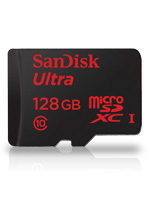I am reporting on the Consumer Electronics Show 2011 which is currently running in Las Vegas. This year, the show is focused around the connected home and lifestyle and I am intending to run the report as a series due to the many trends occurring at this show.
Mobile Handsets and tablets
Most of the activity this year is centred around the smartphone and the tablet-based multifunction internet device (a.k.a. a tablet computer or “fondle-pad”). Here, the main operating system of choice is Google Android. There are two major versions being promoted at this show – Version 2.3 for the smartphones (and other devices) and Version 3.0 for the tablet devices.
This is also augmented by the fact that the US mobile-phone carriers are rolling out 4G wireless-broadband networks. These are either based on LTE technology or WiMAX technology and offer greater bandwidth than the current 3G technology used to serve the typical smartphone user with Facebook data. This leads to quicker content loading for the phone and access to IP-based multimedia.
Infact the “big call” that is being run by these carriers when promoting their devices is the “4G Android smartphone” as being the preferred device to start a mobile service contract on. This is more noticeable with Sprint who are using the “4G Android Smartphone” in their graphics for their online ads.
The Android handsets are coming thick and fast, especially from Samsung, HTC (Evo Shift 4G / Thunderbolt 4G) and Motorola (Cliq 2). The Motorola is also intended to support “call-via-WiFi” so as to offload call traffic via Wi-Fi networks including T-Mobile’s hotspots. This is achieved through the use of the “Kineto” app.
The HTC Evo Shift and Thunderbolt phones are also known to implement a slider design similar to some Nokia phones and use this design to expose a hard keyboard for text entry.
Samsung are going “tit for tat” with Apple by issuing an Android smartphone, MID or tablet device in response to Apple releasing an iOS device. Their answer to the iPod Touch was a Galaxy Player which is Android powered and uses a Super Clear LCD for its display.
Sony have also come up with the Sony Ericsson Xperia Arc mobile phone which has a display and experience as good is the iPhone 4 – the phone to be “seen” with.
As far as phones go, there hasn’t been any Windows Phone 7 action through this CES, but there have been some general innovations happening. One is to design a multi-core processor for handsets, tablets and similar devices. This design would have to be focused around power conservation in order to gain longer battery runtime for these devices. This has manifested in three “dual-core” smartphones being released by Motorola.
Similarly, there have been 40-80 of the tablet computer models being launched. This number may not account for different memory sizes for particular models or whether some models will come with wireless broadband or not. This is also the time that Google are putting the “Honeycomb” version of the Android operating system on the map. This version, Android 3.0, is optimised for the tablet user interface and uses more impressive user interfaces than what was used for Android 2.x in the tablet context. It therefore now sets the cat amongst the pigeons when it comes to a showdown concerning the iPad versus the Android 3.0 tablets.
Stay tuned to HomeNetworking01.info for more posts about the Consumer Electronics Show in Las Vegas.


